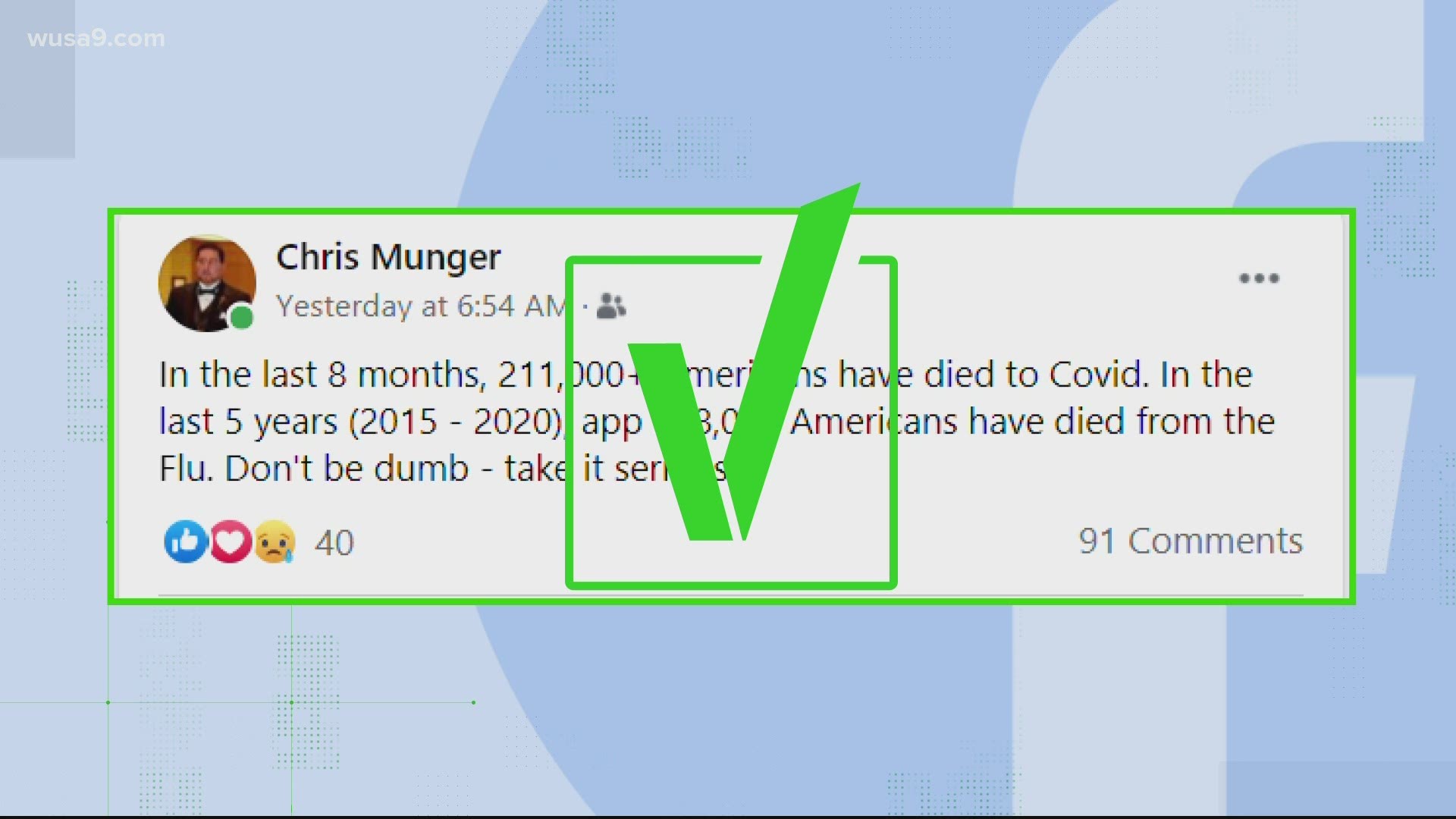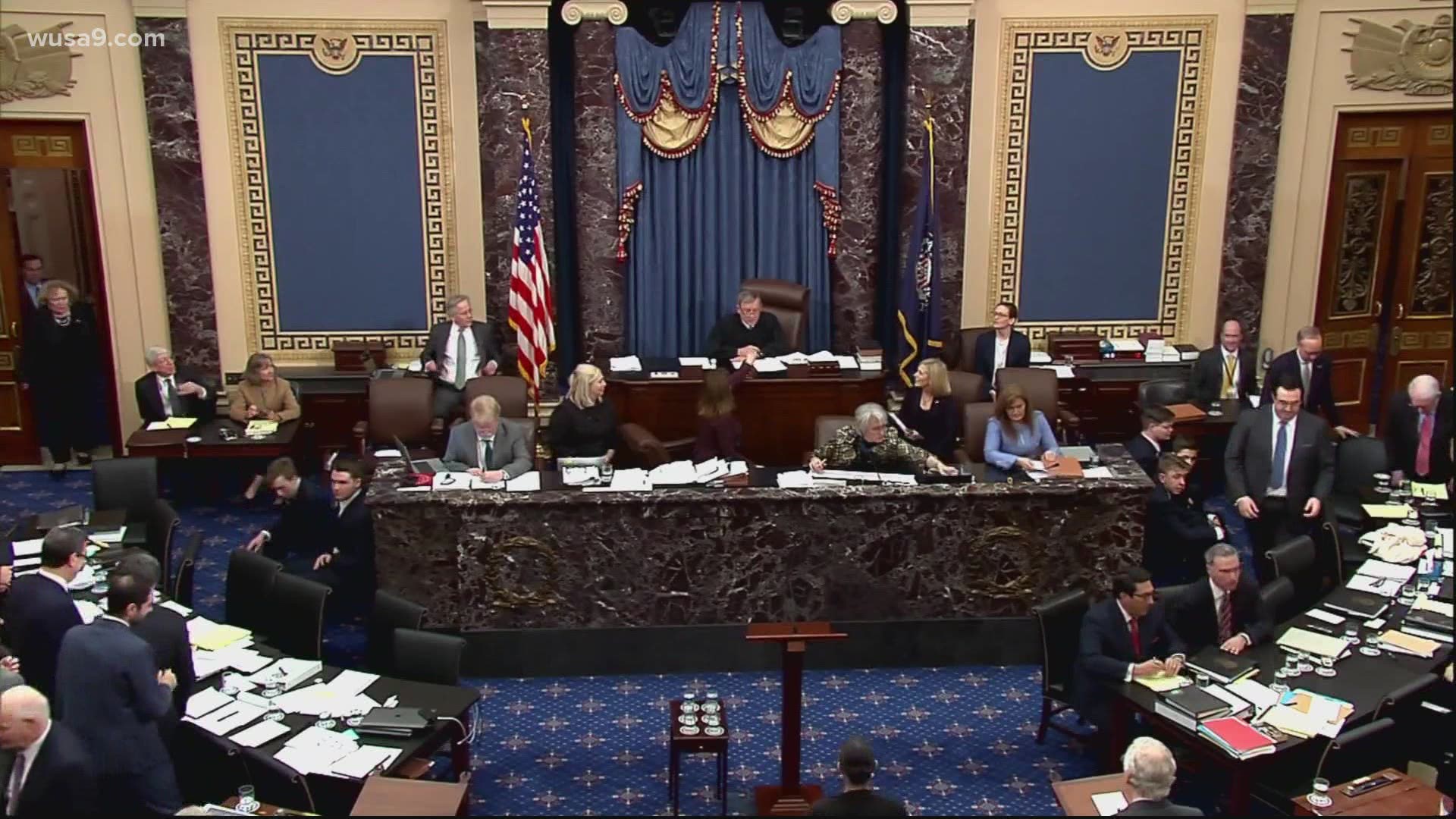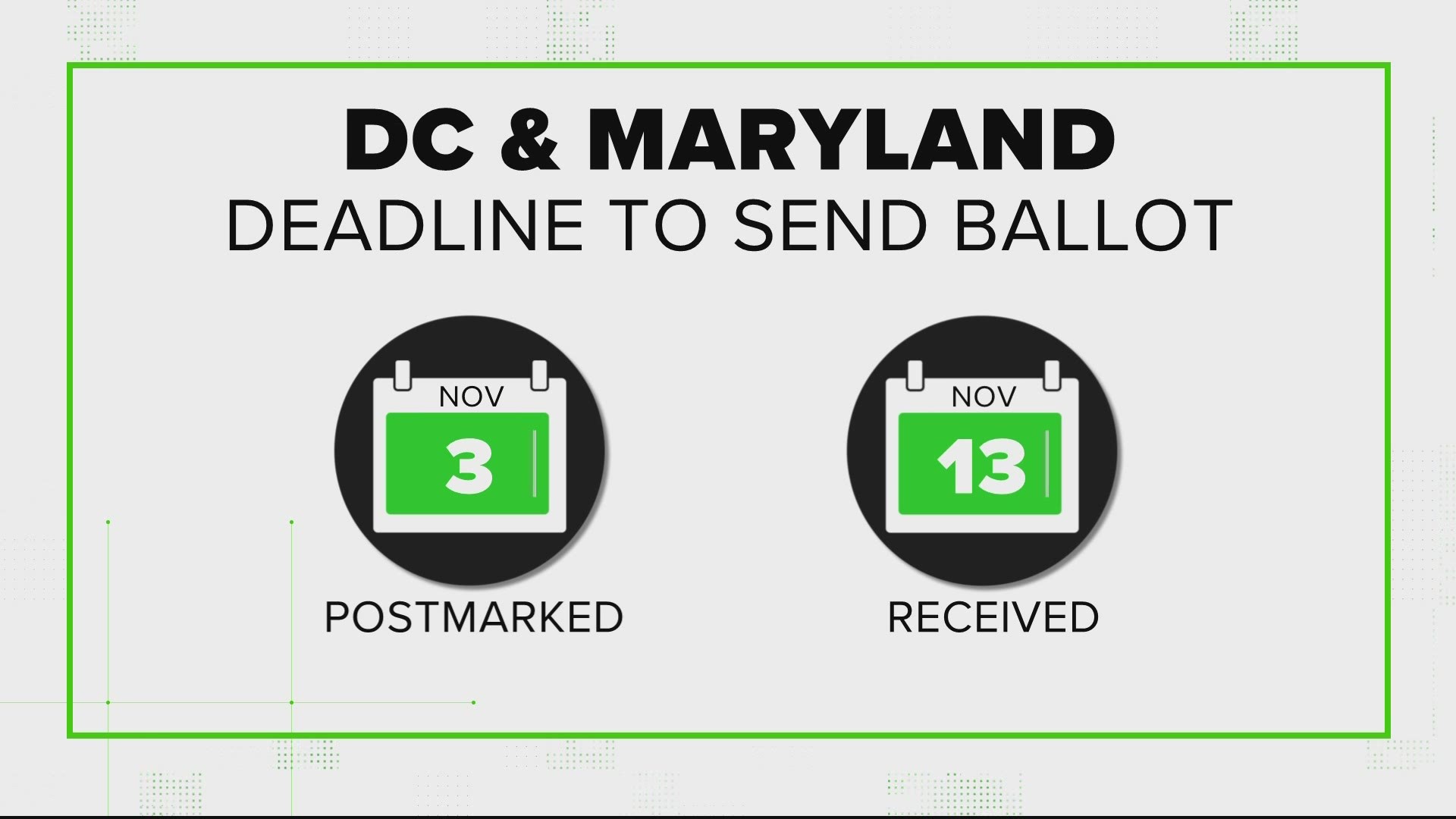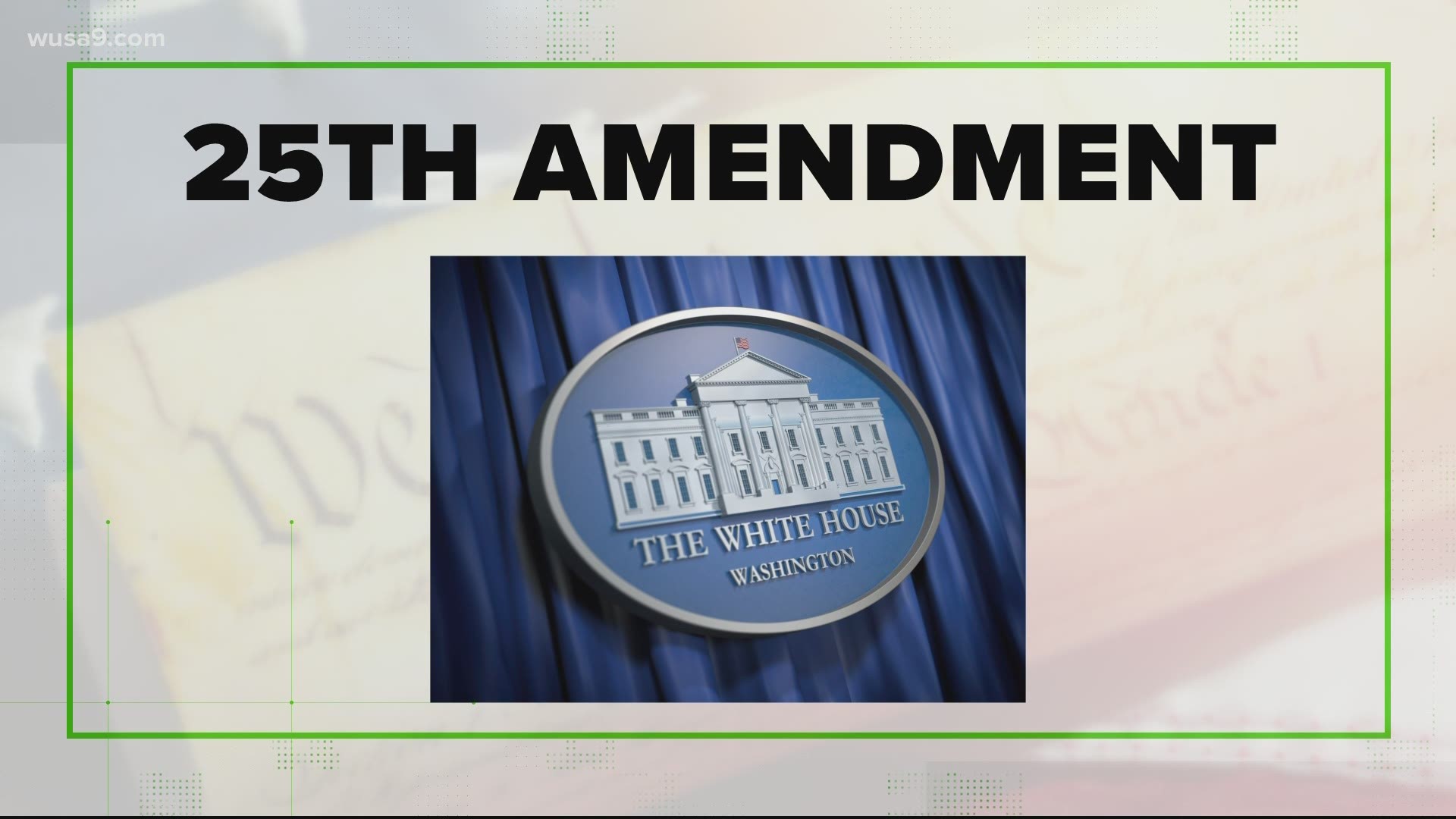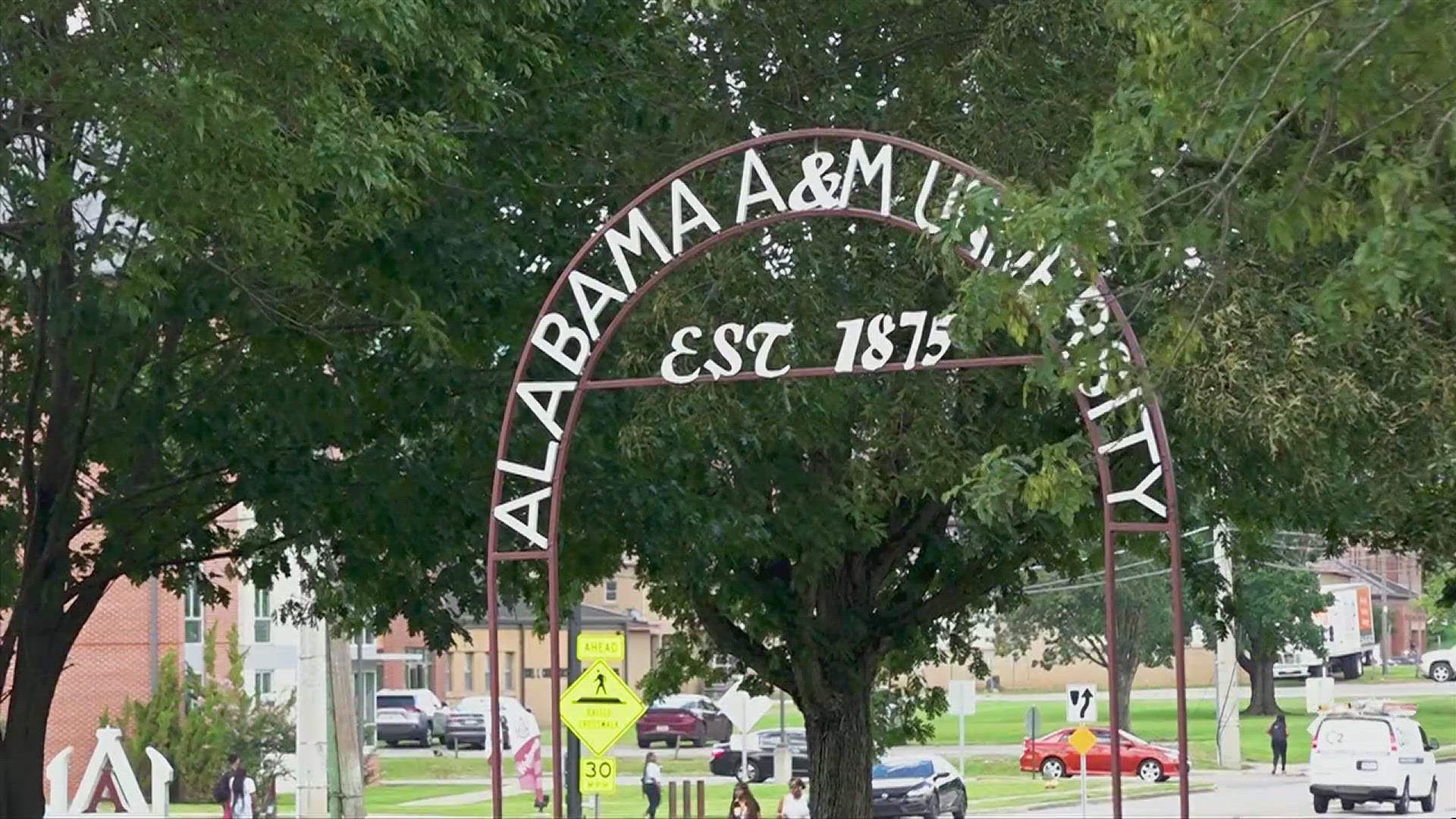WASHINGTON — It's flu season... and election season...and we're still in the midst of a global pandemic. With so much happening in the world, it's easy to have misinformation pop up online.
The Verify team is there to help separate fact from fiction and sort through the confusion -- and we've rounded up five of this week's top claims to help.
Here's a look at some of the top questions we've had from viewers in the last week:
- Has COVID-19 killed more people in the last eight months than the flu has killed in five years?
- Is there a way to remove the Supreme Court Justice from the bench?
- Can a patient continue to test positive for COVID-19 even months later, and if so, are they contagious?
- Are ballots are being accepted after Election Day around the DMV?
- Under the 25th Amendment, who decides who is and isn't fit for the presidency?
- What was true and what was false during that VP debate between Kamala Harris and Mike Pence?
Let's get started.
Has COVID-19 killed more people in the last eight months than the flu has killed in five years?
SOURCE:
CDC: Past seasons estimated influenza disease burden counts
Johns Hopkins University COVID-19 data
ANSWER:
This is true.
In total, the estimated Influenza deaths from 2015 to 2020 are 178,165.
Based on Johns Hopkins University's COVID-19 data dashboard, by the final day of September there had been a total of 206,932 deaths caused by Coronavirus.
In the United States, the COVID-19 death toll over a span of eight months is 16% higher than the influenza death toll over the last five years.
Read the full process here.
Is there a way to remove a Supreme Court justice from the bench?
SOURCES:
ANSWER:
Yes, but it may not apply in the case of Judge Barrett.
“The President, Vice President and all civil Officers of the United States, shall be removed from Office on Impeachment for, and Conviction of, Treason, Bribery, or other high Crimes and Misdemeanors.”
“This includes a Supreme Court justice,” Dr. Graber, a Constitutional Law expert, said.
Graber said the process to remove a justice from the bench is the same as any impeachment proceeding.
“House impeaches, Senate votes on whether to convict,” he said. “As it reads, "the Senate shall have sole power to try all impeachments.”
Read the full process here.
Are ballots are being accepted after Election Day around the DC Metro region?
SOURCES:
Vote.Org, Non-Partisan Non-Profit.
Maryland Elections Webpage
Virginia Elections Webpage
DC Elections Webpage
ANSWER:
Yes, ballots are still being accepted after Election Day, but they must be postmarked by November 3. The Verify team also looked to the local election websites in DC, Maryland, and Virginia, to get the local deadlines for when states are accepting after that.
In DC and Maryland, if a ballot is postmarked by Election Day, it will be accepted up until ten days after Election Day.
That means the ballot is required to arrive by November 13, to be counted. In Maryland, the ballot must arrive by 10 a.m. on November 13.
According to the Maryland State Board of Elections, applications for mail-in ballots must be received by October 20.
In Virginia, if a ballot is postmarked on Election Day, it will be accepted up to noon on November 6th, three days after Election Day.
For more on other states and additional info on ballots, click here.
Can a COVID-19 patient continue to test positive days or months later? If so, is that patient still contagious?
SOURCES:
Centers for Disease Control and Prevention- "When you can be around others after you had or lively had COVID-19," "Duration of isolation and precautions for adults with COVID-19" and "Updated isolation guidance does not imply immunity to COVID-19"
Korea Disease Control and Prevention Agency- "Findings from investigation and analysis of re-positive cases"
Dr. Stuart Ray - Vice Chair of Medicine for Data Integrity and Analytics and Professor of Medicine- Johns Hopkins Medicine
ANSWER:
Yes, someone who tests positive for the COVID-19 virus can continue to test positive for weeks and months later according to our experts.
In August, the CDC said that those who tested positive can continue to test positive for 90 days.
It is still unknown whether patients continue to be infectious during that time.
"We don't have evidence that those people are infectious at that point," Dr. Stuart Ray told Verify researchers. "But we don't have a way to prove they're not infectious.”
Read the full process here.
Under the 25th Amendment, who decides if the president is unable to do his or her job?
RELATED: VERIFY: Under the 25th Amendment, who decides if the president is unable to do his or her job?
SOURCES:
The U.S. Constitution and law professors Sai Prakash from the University of Virginia and Ilya Somin from George Mason University.
ANSWER:
The first part of the 25th Amendment is clear: if the President dies, resigns or is removed from office, the vice president takes over.
First, the president submits a written declaration to the president pro tempore of the Senate and the speaker of the House of Representatives, in this case Sen. Chuck Grassley and Rep. Nancy Pelosi, respectively.
Vice President Mike Pence would then act as president until Trump submits a written declaration that he can resume.
Then there’s the other way it could go down.
The VP and a majority of the “principal officers of the executive departments," which our experts say is generally interpreted as the president’s cabinet, submit a written declaration to the president pro tempore of the Senate and the House speaker that the president is unable to do his or her job.
The president would be allowed to contest that declaration, but if the VP and cabinet persist, that would lead to a vote in Congress. It would take a vote of two-thirds in both houses to keep the VP in charge.
Read what our experts think could happen, and more on the 25th Amendment, here.
Okay, what about that VP debate?
We break down some of the top claims from both Kamala Harris and Mike Pence:
For a deeper dive of each of these claims and others said during the debate, click here.
See something online that you want Verified? Have a question you want our researchers to look into? Contact our Verify team!



